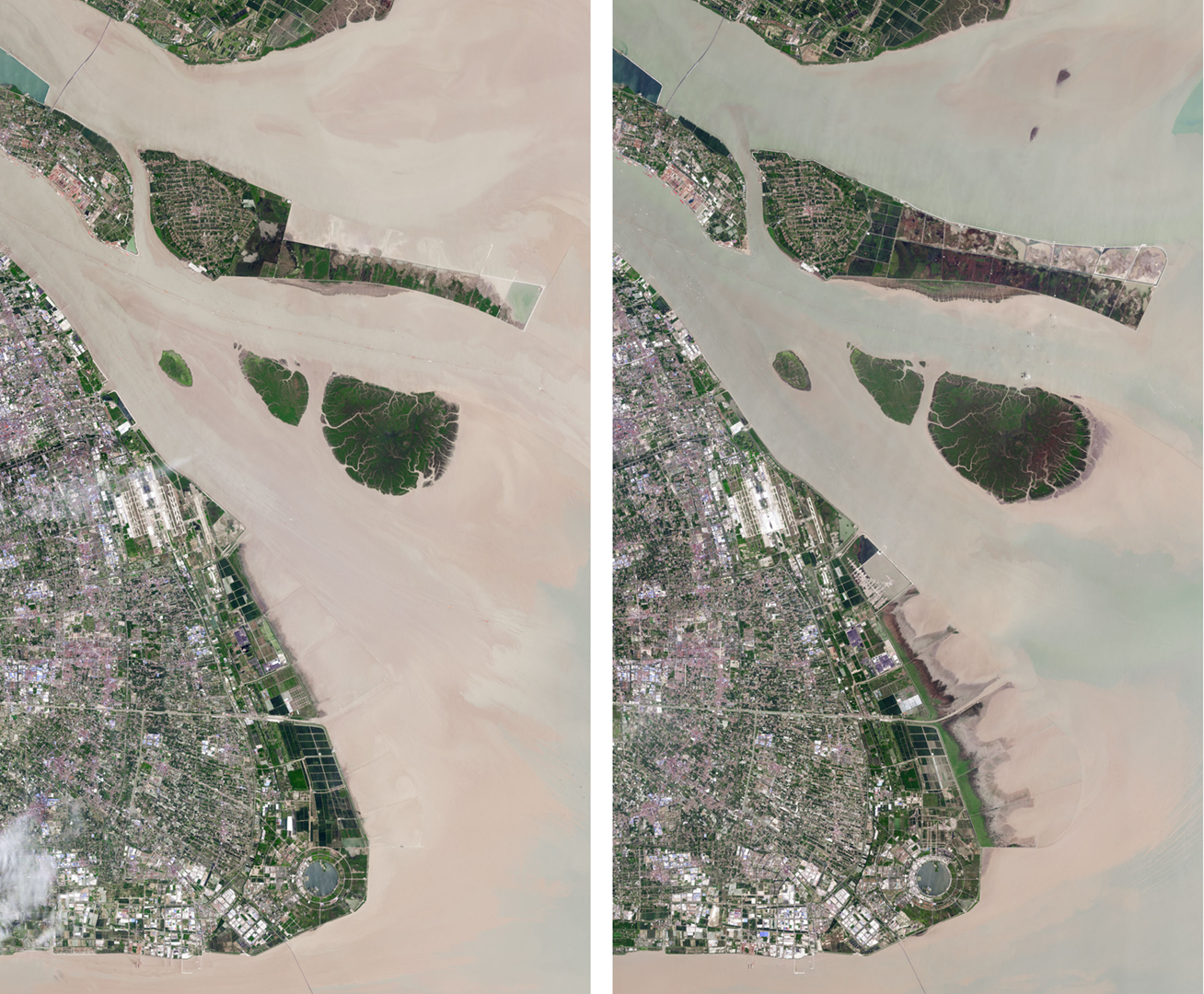Excerpt:
Humans have added approximately 900 square miles of land to urban coastlines this century, and we’re building more…
Humans are artificially expanding cities’ coastlines by extending industrial ports and creating luxury residential waterfronts. Developers have added over 2,530 square kilometers of land (900 square miles, or about 40 Manhattans) to coastlines in major cities since 2000, according to a new study.
The study reports the first global assessment of coastal land reclamation, which is the process of building new land or filling in coastal water bodies, including wetlands, to expand a coastline. The researchers used satellite imagery to analyze land changes in 135 cities with populations of at least 1 million, 106 of which have done some coastline expansion.
The study was published in AGU’s journal Earth’s Future, which publishes interdisciplinary research on the past, present and future of our planet and its inhabitants.
“Population growth is not the only driver of coastal land reclamation,” the study’s authors said. “We expect that reclamation would continue to be popular in places that not only experience urban growth but also are eager to re-brand themselves for reputation and revenue.”
Coastal land reclamation today is most common in the Global South, where many economies are rapidly growing. In the previous century and earlier, the Global North dominated the use of coastal land construction. The study found China, Indonesia and the United Arab Emirates added the most land area, with port extension being the most common reason for development. Shanghai alone has added about 350 square kilometers (135 square miles) of land. In the United States, by comparison, only Los Angeles has noticeably added land area in the last 20 years, with 0.29 square kilometers (0.1 square miles) built.
“It’s quite important to capture this,” said Robert Nicholls, who researches climate adaptation at the University of East Anglia and is not an author of the study. “There are more and more people, and our footprint is going up. Inevitably, there are ecologic consequences…”









